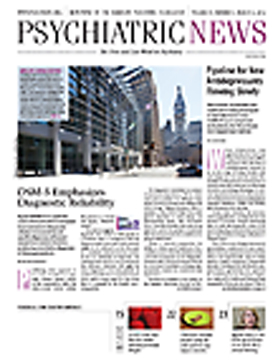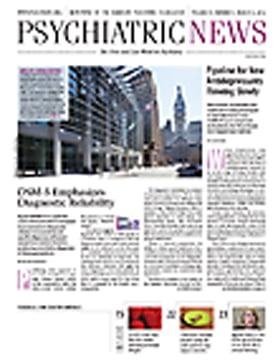Giving states flexibility in determining what health care coverage will look like under the Affordable Care Act (ACA) has the potential to hamper the future delivery of mental health and substance use disorder services.
So contends APA in regulatory comments submitted January 31 in response to a mid-December Department of Health and Human Services (HHS) bulletin outlining proposed policies on state implementation of federal health care reform.
Issued through the Center for Consumer Information and Insurance Oversight (CCIIO) of HHS’s Centers for Medicare and Medicaid Services, the bulletin describes the agency’s approach to defining the “essential health benefits” (EHB) that must be offered in individual and small-group health insurance plans beginning in 2014 under the ACA.
HHS proposes that states would use existing health plans to set benchmarks for the items and services included in EHB packages. Specifically, the agency would have states choose one of the following plans as a benchmark:
One of the three largest small-group plans in the state.
One of the three largest state employee health plans.
One of the three largest federal employee health plan options.
The largest HMO plan offered in the state’s commercial market.
The benefits and services included in the health insurance plan selected by the state would comprise the EHB package, HHS said, adding that plans could modify coverage within a benefit category as long as they do not reduce the value of the coverage.
Under the health reform law, states must ensure that EHB packages cover items and services in at least 10 categories; mental health, including substance abuse, is among them. But APA expressed concern that the regulatory approach outlined by HHS will fail to meet the needs of individuals with mental illness, including substance use disorders, without significant clarifications and modifications.
“Having individual states design an essential health benefits package, coupled with a lack of clear definitions and guidelines from the federal government, risks undermining the mental health parity extended to qualified health plans under the Affordable Care Act… as well as the entire Mental Health Parity and Addiction Equity Act of 2008 (MHPAEA),” wrote APA Medical Director James H. Scully Jr., M.D., in a 10-page letter to CCIIO Deputy Administrator and Director Steve Larsen.
To ensure equitable coverage for those with mental disorders, APA urges HHS to do the following:
Provide regulations and guidance to the states that clearly delineate the EHB requirements.
Clearly define critical concepts and terms.
Provide specific protections against discrimination, especially those afforded under the MHPAEA.
Ensure that variations in state selection of benchmark plans do not undermine current state mental health and substance use disorder requirements.
Explicitly require strong state and federal oversight of qualified health plans.
Ensure that program implementation is fully transparent.
“While benefit flexibility may be the general approach adopted, there are a number of policy and definitional matters that we think need to be uniform if the overall program is to be equitable and there is to be meaningful oversight,” said Scully.
Among APA’s specific recommendations are that HHS limit states’ options to benchmark their EHB packages to large group plans; monitor the effect that benchmark selection has on state insurance mandates and the populations they were intended to serve; prohibit substitution of benefits across categories and only allow flexibility within categories to improve and expand benefits; issue a final rule on mental health parity prior to January 1, 2013; and devise a federal floor for the essential health benefits that could serve as a national model for states designing EHB packages.

